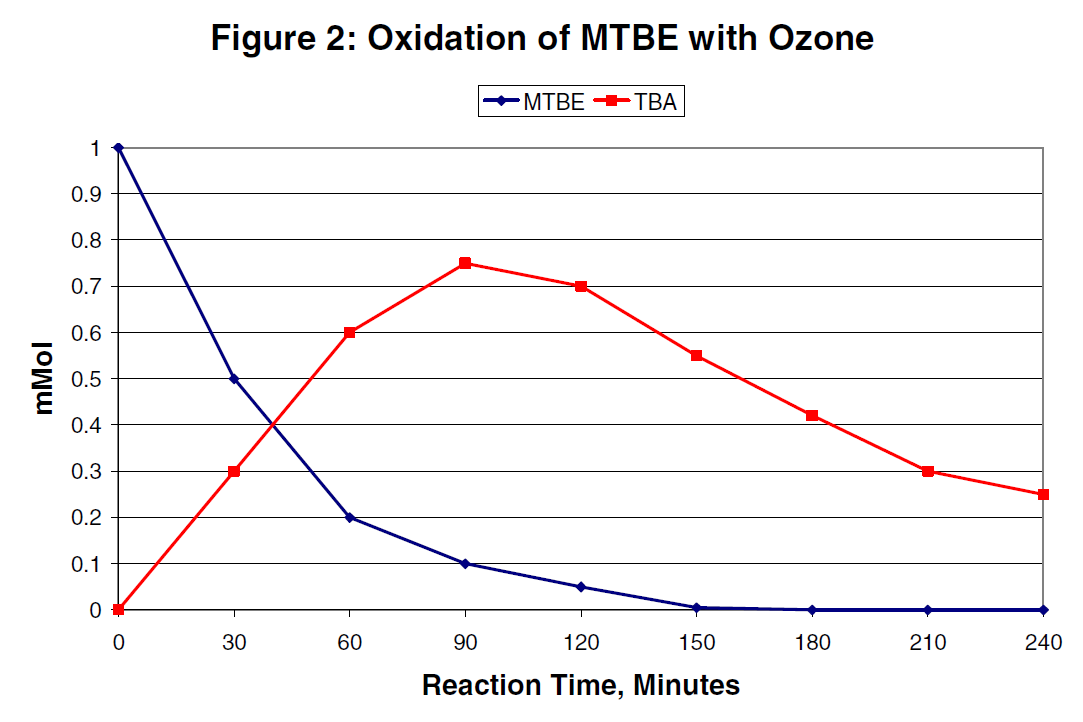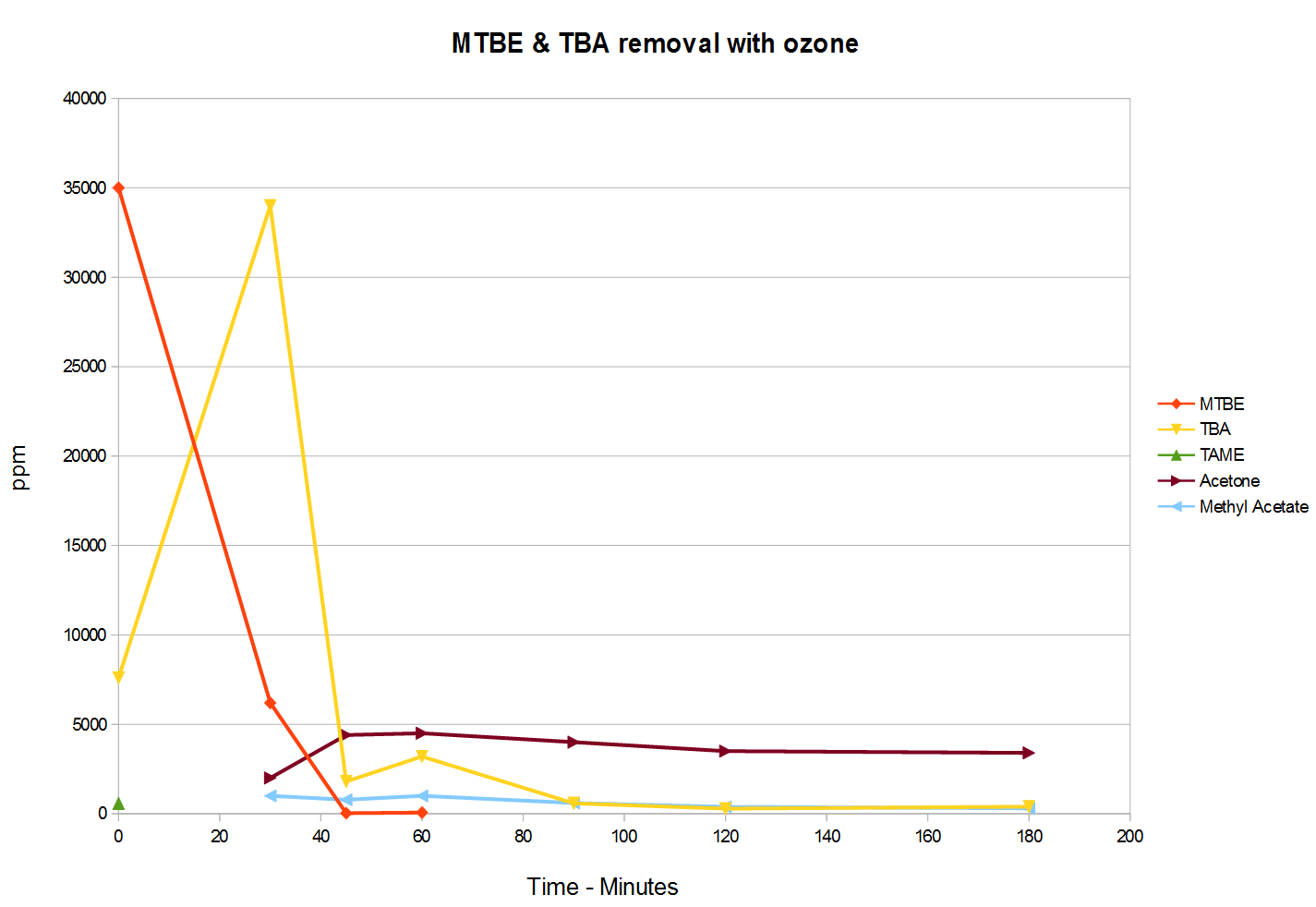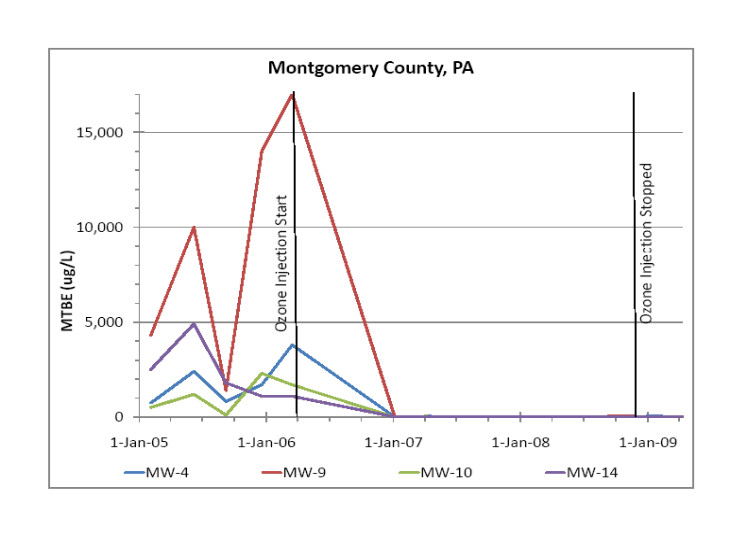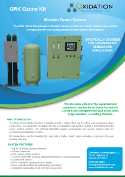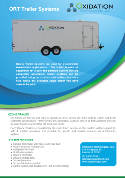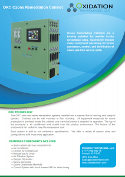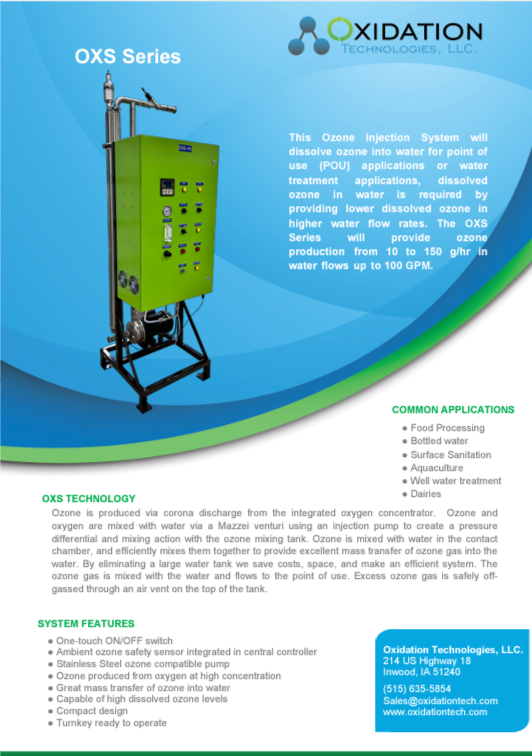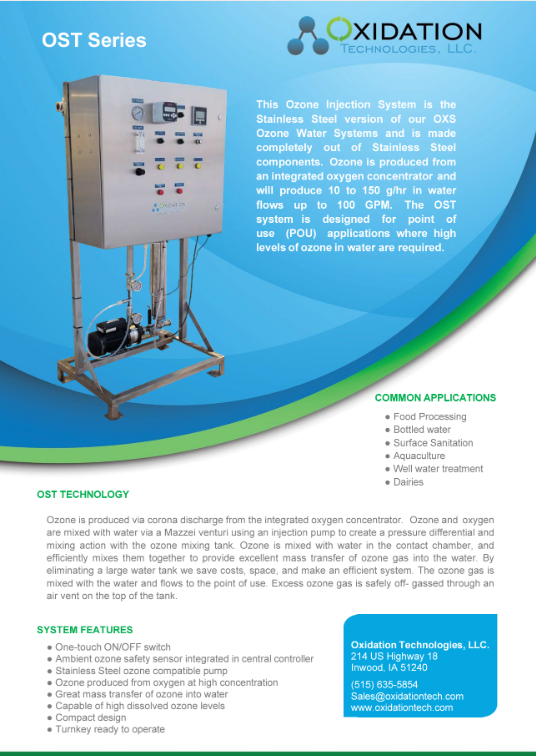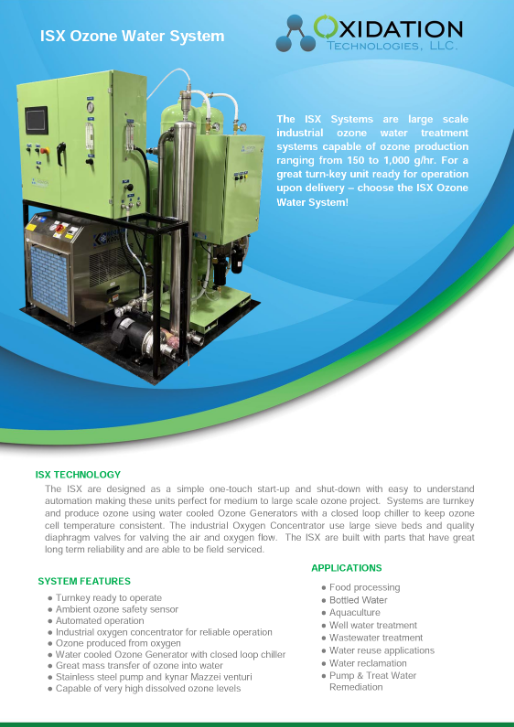MTBE removal with ozone
MTBE (Methyl tert-butyl ether) removal with ozone has become widely used for in-situ remediation due to quicker clean-up times, and overall lower costs for remediation. Ozone has also been used to remove MTBE from water in pump-and-treat systems, and even in some drinking water systems where groundwater has been contaminated with high levels of MTBE

MTBE has been used as a gasoline additive since 1979 as an oxygenate to promote cleaner burning fuel. However, as usage of MTBE increased spills and leaks also become prevalent. In the 1990's public concern for the safety of drinking water potentially contaminated with MTBE grew. As this concern grew regulatory standards for MTBE in water sources were initiated. Regulatory levels of MTBE in water range from state to state, but can be as low as 5 μg/L.
Ozone has proven to be successful at oxidizing MTBE in water. Ozone rapidly oxidizes MTBE, however, TBA (tert-Butyl alcohol) is formed as a by-product of this oxidation. TBA is then oxidized by ozone, but at a slower rate than MTBE. See chart directly below for a great example:
Image from: Chemical Oxidation of MTBE and TBA
The chart above shows a great example of MTBE removal in water with only MTBE and TBA data shown. As MTBE was oxidized, TBA was created at the same rate. After MTBE oxidation was nearly complete TBA oxidation started to occur, but at a slower rate. TBA will also be completely oxidized from water with ozone over time. Ozone remains a great option for oxidation due to the rapid oxidation of MTBE and complete destruction of both MTBE and TBA with no harmful by-products left in the water.
Our Results:
We have used ozone for MTBE removal for both in-situ and pump-and-treat applications with great success. MTBE oxidation is completely quickly and completely with ozone. We have found no benefit to the addition of H2O2 with this process, other than to aid in the oxidation of other compounds that may be found with the MTBE.
Ex-Situ Pilot Test
The chart shown below was generated based on data obtained from a pump-and-treat pilot test performed by a customer of ours. This shows the removal of MTBE in a pump-and-treat pilot test.
This water was contaminated with a large amount of MTBE with some TBA and a small amount of TAME. The TAME was removed from the first sample taken. The MTBE was removed rapidly converting to TBA at a near stoichiometric rate. TBA was also removed over time from this water. Small amounts of acetone and Methyl Acetate were also produced as by-products. These are both fully oxidized from water with ozone over time.
For full details on this test and full results, please contact our office.
In-Situ Pilot Test:
The following graph shows the removal of MTBE using injection wells at a site in PA. Nearly all of the MTBE was removed from all four monitoring wells within 1 year of starting the ozone injection with no rebound of the MTBE after ozone injection was ceased.
Click HERE for additional site data using ozone for in-situ remediation.
We can provide additional background information on this site and others to help you choose the right method of ozone injection for your specific application. Contact our office for any questions you may have on this data.
In-Situ Remediation:
For in-situ chemical oxidation applications, we offer a variety of systems and options. Complete turn-key trailers are commonly used. We also offer modular system to allow the end-user to install the system in an existing enclosure on-site. This may be helpful for a retrofit, or to lower costs by using existing infrastructure.
In these applications, ozone is produced as a gas from oxygen. This ozone is pushed through tubing to the bottom of a well and diffused at the bottom of the well in the water table. Ozone will dissolve into water in an area around each well treated breaking down the MTBE in that area. The ozone system will normally treat multiple wells on a single site by switching between wells periodically. As ozone has a half-life and will continue to break-down MTBE after sparging is shut-off there is added benefit to treating 15 wells with a system that has the capability of sparging to only 5 wells at a time.
Pilot systems are also available for In-situ remediation for short-term tests. We currently have ozone trailers available for these applications
-Trailer mounted ozone systems
-Cabinet mounted ozone systems
-All new ozone systems for remediation applications
-Pilot systems currently available
Pump and Treat:
This refers to any system that will treat water in a flow or process. We offer ozone injection systems that are typically skid mounted to be installed in existing infrastructure. A standard ozone water system will consist of an ozone generator that generates ozone from oxygen, an ozone injection pump and venturi to dissolve ozone gas efficiently into water and an ozone mixing tank to allow ozone gas time to dissolve into water, while off-gassing excess ozone from the process.
Very little contact time is required for MTBE reduction in water. What is needed is sufficient contact time to fully oxidize TBA and other potential by-products produced from MTBE oxidation. Exact ozone dosage rate, contact time, and technology used should be based upon the levels of MTBE in water and the other potential contaminants found in the water.
Pilot test systems are available, we can also provide bench-scale testing services to determine if ozone is a viable option for your water.
-Pilot test system for rent currently available
Technical Documents:
Below is a series of papers and documents outlining practical and laboratory success in the elimination of MTBE from water using ozone, or ozone AOP processes.
-Chemical Oxidation of MTBE and TBA
-Ozone as a clean-up tool for MTBE
-The use of Ozone Sparging to remove MTBE from Groundwater in a uniform sand aquifer
-Efficiency of Ozonation and AOP for Methyl-tert-Butylether (MTBE) Removal in Waterworks


